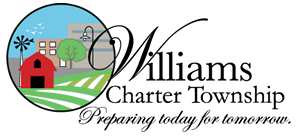Home / Departments / Property Tax Assessing / Property Tax Overview
Property Tax Overview
For many decades township governments as well as other local units operated almost entirely on the revenues they could generate from property taxes. The state government, prior to the Great Depression of the 1930s, also depended on this tax as a principal source of revenue. Personal resources, being what they were in that period, property taxes did not generate enough to go around. Since then the state left the property tax largely a means for financing local units of government. The state turned to other more diversified sources of tax revenues; sales taxes, including those on gasoline, tobacco, and liquor products, as well as to taxes on various services. After the 1960s the state added personal income and business taxes to its revenue sources. As a result, with nearly 50 different taxes, the state has generated a highly diverse, complex, and stable tax base.
Not so for the localities. In Michigan, local governments do not have authority to levy a sales tax, and only cities are authorized to impose a tax on personal income (In 2000, 24 Michigan cities levied a personal income tax). In terms of local revenues, townships still rely upon the property tax as a major source of local income. Yet, because of intergovernmental transfers, especially from state government, townships and other local units have been able to benefit from the diversity of the state tax system. Intergovernmental transfers from the federal government direct to local units declined greatly by the 1990s. Most federal funds now pass through state government. Structural budget deficiencies at the state level have greatly reduced the amount of dollars received to provide local services from intergovernmental transfers in recent years from the state of Michigan.
Complexity has been one of the by-products of the increase in intergovernmental revenues. The state allocates its intergovernmental transfers in most cases on the basis of formulas that include factors of population, local wealth - as measured in part by the property tax base - and tax effort. To assure equity among the units, the state seeks to assure that property tax laws are administered uniformly throughout the state. State oversight of property tax administration works to reduce the temptation to manipulate the rules for local advantage at the expense of others. The state rules add complexity to the system.
Complexity in the property tax system has also come about as a result of tax relief measures instituted either by statute or constitutional amendment. The so-called "Headlee Amendment" of 1978 served both to limit tax increases and make tax increases more difficult to achieve. Similarly, Proposal A of 1994, shifted the funding of K-12 education from school districts to state government, instituted a return to a state property tax, and restricted growth in the community tax bases. In short, the general property tax has become a tax in which the state has a great deal of interest and one that is jointly administered by the state and local governments. And because of the integration of intergovernmental transfers and the various relief measures, the property tax has become a part of the taxation system itself in which both state and local governments share.
